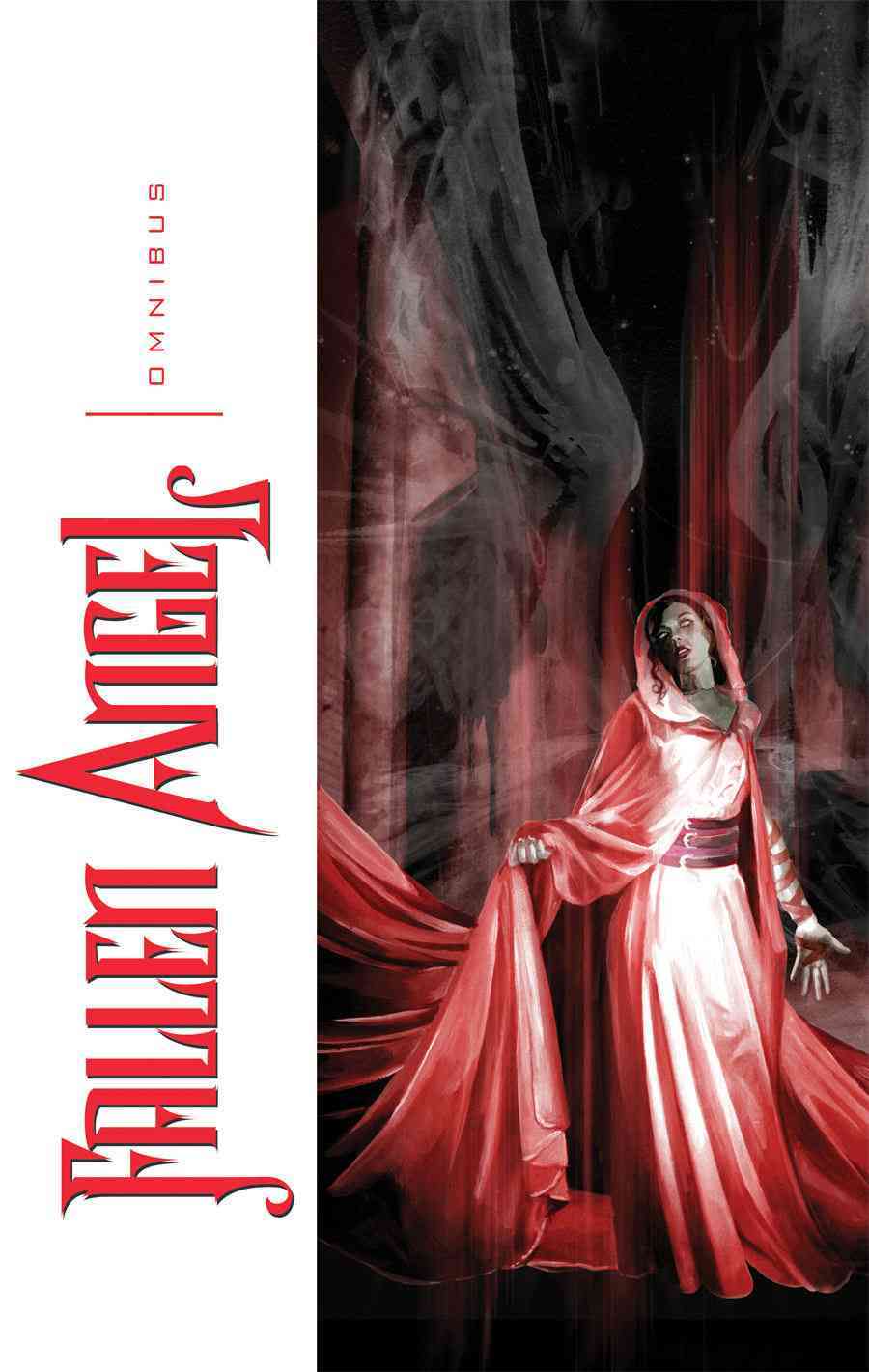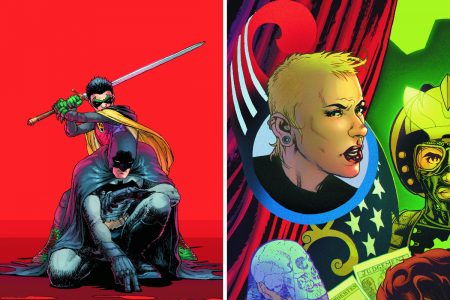Fallen Angel #1–21 by Peter David and various artists
I don’t know why my local library would have a 466-page brick of independent comic books, but I had to borrow it when I saw it sitting there on the shelf. At the very least it will let them know there are people who read more than superheroes in the graphic novels section.
Fallen Angel is a curious case in comic books – it was created by Peter David and David Lopez for DC, a book that was neither Vertigo nor DC universe but somewhere in between. It lasted for 20 issues before it was cancelled due to low sales, and IDW picked it up to continue the series. There was supposedly a connection with Peter David’s Supergirl series (the Linda Lee Danvers version), but it was never confirmed (although David would later suggest that there was a link later in the IDW series). This omnibus contains the five-issue mini-series that IDW launched and the ongoing series that was continued due to sufficiently high sales.
The first five issues set up everything you need to know if, like me, you haven’t read any of the DC series, and explains the origin of the Fallen Angel: Lilandra, who prefers to be called Lee, was a guardian angel who was stripped of her title when she avenged the death of the charge who had developed the ability to see her. She wouldn’t be allowed in Hell, so she was sent to earth (on which she cannot stand, so she hovers above the ground) and ended up in Bete Noire, ‘the city that shapes the world’, a place riddled with corruption and where she is the only power for justice (she has some superhuman powers, such as strength and ability to project mystical energy from her eyes).
The first five issues also set up the main characters of the city: it is run by The Magistrate (Doctor Juris), who can’t be harmed but can’t leave the city; there is Black Mariah, who gathers information for the Magistrate, but she has the power to suck the life out of someone she touches; there is the Shadow Boxer, who is the main enforcer for the Magistrate; there is Slate, chief examiner of the city; Asia Minor, a drug lord who lives in a graveyard; and Dolf, the owner of Furor’s, the bar where Lee lives and where neutrality exists. The other main character is Jude, Lee’s son with the Magistrate, who had been a priest but lets himself be tricked into becoming the new Magistrate. There is also the mythology – God doesn’t care about existence, wishes that humanity would stop praying to him (which is why he keeps on raining down disasters, including global warming), so he can rest in peace after all his hard work. That’s very Garth Ennis for a Peter David comic.
After these five issues, the stories continue in various directions, including Lee’s adventures outside Bete Noire, Jude learning about the curse of being the Magistrate (being able to hear all the individual suffering), Lee’s predecessor as the source of justice in Bete Noire (a woman called Lin, who Peter David basically admits to being his Supergirl character), the integration of Sach and Violens – characters created by David and George Perez for Marvel’s Epic Comics imprint – into the storyline, and even a few issues where Billy Tucci’s Shi plays a role. The series is definitely more mature (in the sense of containing nudity, sex and swearing) than the majority of David’s output, but it is all the better for it – he can put the series in the noir setting and see it all the way through rather than having to hold back for a family audience. There is also David’s trademark humour (Lee gets most of the best lines), which works just as well in a coarser setting, and his impressive ability to keep his storylines going in whatever series he is working on, without worrying about writing for the trade.
The other aspect is the art. The first five issues are painted art by new-to-me JK Woodward, and it is quite beautiful. It is moody and atmospheric but also exquisite and dynamic. It is really quite lovely and Woodward is quite a find; however, it makes the art in the rest of the series suffer by comparison, which is particularly weird when Woodward provides pencil and ink art for the next nine issues. His art is still solid but it lacks the special quality present in the painted work of the first five issues, which I wish had been used for the entire series (even though that is completely non-viable for an ongoing series, especially for a publisher like IDW).
Despite the poor binding of the book, which means that some pages are falling out, the omnibus is an impressive package. It was enjoyable to read a massive chunk of comics, as Peter David told his stories in an entertaining manner. However, it didn’t cause the spark necessary for me to want to buy the trades to see how the story continues. There is nothing wrong with Fallen Angel, but it never crossed over into ‘I must read this’ territory – I had put the book down beside my bed some time during reading it and then some other books were accidentally piled on top, and I didn’t remember it until a while later, which is perhaps an indication of how much it had connected.




